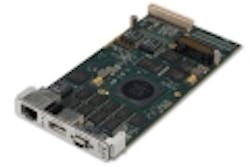Boeing to adapt A160T Hummingbird unmanned helicopter to carry optical persistent surveillance, SIGINT payloads
ARLINGTON, Va., 8 Dec. 2010.Unmanned aerial vehicle (UAV) engineers at the Boeing Phantom Works Advanced Unmanned Systems-Concept Exploration segment in Irvine, Calif., will adapt the company's A160T Hummingbird unmanned helicopter to carry electronics payloads for signals intelligence (SIGINT), as well as the BAE Systems Autonomous Real-time Ground Ubiquitous Surveillance-Imaging System (ARGUS-IS) for persistent surveillance.
Boeing is doing the work under terms of a $12.8 million contract awarded Tuesday by the U.S. Defense Advanced Research Projects Agency (DARPA) in Arlington, Va. Boeing and BAE Systems are developing the Hummingbird UAV and the ARGUS-IS persistent surveillance payload under DARPA sponsorship.
The autonomously flown A160T unmanned helicopter is 35 feet long with a 36-foot rotor diameter. It is designed to fly 2,500 nautical miles with more than 24 hours of endurance with payloads that weigh more than 300 pounds. Hummingbird will fly as fast as 140 knots at altitudes as high as 30,000 feet, for reconnaissance, surveillance, target acquisition, communications relay, and precision re-supply.
The BAE Systems Electronic Solutions sector in Nashua, N.H., has been developing the ARGUS-IS since 2007. The compact daytime surveillance system combines a multi-gigapixel, high-resolution sensor; wide-field optics; an ultra-high-bandwidth, real-time airborne processing system; and a ground station for interactive multitarget designation, tracking, and exploitation. The airborne processing system can simultaneously and continuously detect and track the presence and motion of thousands of small or large targets over an area covering tens of square miles.
BAE Electronic Solutions also is developing an airborne processing subsystem and high-resolution infrared sensor subsystem for a nighttime persistent surveillance system for DARPA called the Autonomous Real-time Ground Ubiquitous Surveillance - Infrared (ARGUS-IR) system, which in the future could give the Hummingbird staring infrared sensors for long-term persistent surveillance of battlefields and urban areas at night.
Boeing will equip the Hummingbird to demonstrate the unmanned helicopter's ability to carry a modified ARGUS-IS pod which includes carrying the ARGUS-IS and SIGINT payloads. Boeing will do the work in Irvine, Calif., and should be finished by this spring.
For more information contact Boeing online at www.boeing.com, or DARPA at www.darpa.mil.
